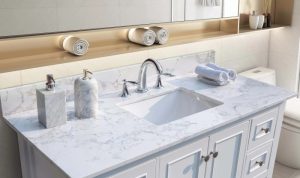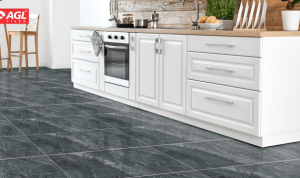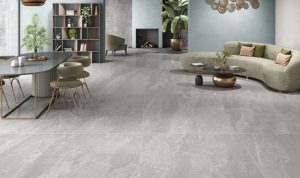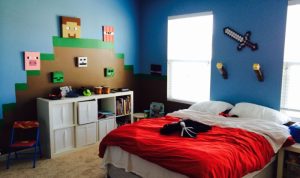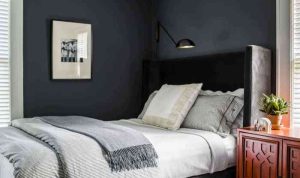Decorative Elements on the Coffee Table
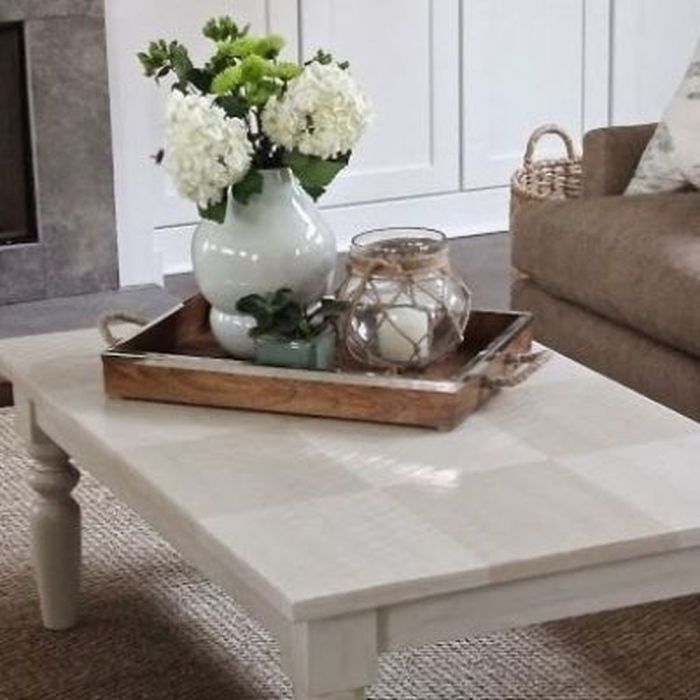
Living room coffee table decor – A coffee table is more than just a place to rest your drinks; it’s a central element in your living room, offering a prime opportunity to showcase your personal style and create a welcoming atmosphere. The decorative elements you choose significantly impact the overall feel of the space, setting the tone and reflecting your aesthetic preferences. Careful consideration of color palettes, textures, and the strategic placement of items will transform your coffee table from a functional piece to a stylish focal point.
Coffee Table Styling Mood Boards: Minimalist, Bohemian, and Traditional
Visualizing different styles before decorating is crucial for achieving a cohesive look. Below are descriptions of three distinct coffee table styles, each with its unique color palette and textures. Imagine these as mood boards, guiding your selection of decorative items.
Minimalist: This style emphasizes clean lines, simplicity, and functionality. The color palette is typically neutral, featuring shades of white, beige, gray, or black. Textures are kept simple, with smooth surfaces dominating. Think a single, sculptural ceramic vase in matte white, a stack of three coffee table books with neutral covers, and a small, sleek tray holding a single succulent plant.
The overall effect is calm and uncluttered.
Bohemian: Bohemian style is characterized by its eclectic mix of patterns, textures, and colors. Think rich jewel tones like deep blues, emerald greens, and burnt oranges, combined with earthy neutrals like terracotta and beige. Textures are varied and layered, including woven baskets, plush velvet cushions, and natural materials like wood and rattan. A collection of small, mismatched decorative bowls, a hand-woven throw blanket draped over the side, and a cluster of candles in various heights and colors would perfectly capture this vibe.
The overall effect is vibrant, layered, and full of personality.
Traditional: Traditional style often features classic elegance and symmetrical arrangements. The color palette is usually muted, with emphasis on rich, warm tones such as deep browns, creams, and golds. Luxurious textures like velvet, silk, and polished wood are prevalent. A centerpiece might include a polished silver tray, a pair of matching porcelain vases filled with fresh flowers, and a selection of antique-looking books.
The overall effect is sophisticated, refined, and timeless.
Five Unique Decorative Accents for a Coffee Table
Choosing unique items adds personality and visual interest. These five options offer diverse materials and aesthetics to enhance your coffee table’s appeal.
- Sculptural Ceramic Bowl: A handcrafted ceramic bowl with an interesting shape and texture adds a touch of artistry. The matte finish and organic form contribute to a sophisticated, modern aesthetic.
- Hand-blown Glass Vase: A delicately crafted hand-blown glass vase, perhaps with subtle color variations, brings a sense of elegance and light. The transparency allows the flowers or branches inside to be showcased beautifully.
- Woven Tray: A tray made from natural materials like seagrass or rattan adds a touch of warmth and texture. It provides a practical surface for holding remotes, coasters, or other small items, while enhancing the overall visual appeal.
- Antique Brass Candle Holders: A set of antique brass candle holders with intricate detailing adds a touch of vintage charm and elegance. The warm metallic tones complement a variety of styles.
- Textured Wooden Box: A small wooden box with a unique wood grain or carved design serves as both a decorative accent and a functional storage solution for small items.
Coastal Themed Coffee Table Centerpiece
A coastal-themed centerpiece evokes a sense of calm and relaxation. Here’s how to arrange five items to achieve this effect.
- Base: A large, light-colored wooden tray serves as the foundation, providing a neutral backdrop for the other elements.
- Centerpiece: A glass hurricane vase filled with white sand and seashells creates a focal point, reflecting light and evoking the beach.
- Height: A small, weathered driftwood sculpture adds height and texture, creating visual interest and breaking up the uniformity.
- Color: A small bowl filled with smooth, colorful sea glass adds a pop of color and texture, complementing the neutral tones.
- Finishing Touch: A small, framed photograph of a seascape adds a personal touch and completes the coastal theme.
Coffee Table Arrangement & Functionality
The coffee table is a central piece in any living room, impacting both the room’s aesthetic and its practical usability. Its size, shape, and the way items are arranged on its surface significantly influence how easily the space functions for relaxation, conversation, and entertainment. Understanding these factors is key to creating a living room that is both stylish and comfortable.The size and shape of a coffee table directly impact its placement and functionality.
A large, square coffee table, for example, works well in a spacious living room, providing ample surface area for drinks, snacks, and decorative items. However, in a smaller living room, such a table could overwhelm the space and hinder movement. A smaller, round or oval coffee table, on the other hand, is often a better choice for smaller rooms as its shape allows for easier navigation around it.
Similarly, a rectangular coffee table might be ideal placed lengthwise in front of a sofa, offering a convenient surface for guests to rest drinks. The placement should always consider the flow of traffic and the overall balance of the room.
Coffee Table Arrangement Strategies
Arranging items on a coffee table requires a balance between visual appeal and practical usability. Overcrowding creates clutter, while an overly sparse arrangement can feel sterile. Three distinct approaches can enhance visual interest while maintaining functionality.The first approach focuses on creating a visually balanced arrangement using a combination of height, texture, and color. Imagine a large, textured coffee table book placed horizontally at the center, flanked by two smaller, differently colored decorative objects – perhaps a sculptural ceramic piece on one side and a small vase of flowers on the other.
The varying heights and textures prevent monotony, while the color contrast adds visual interest.A second approach prioritizes a more minimalist aesthetic. This involves selecting a few key items, such as a single, striking decorative object (a stylish bowl, for instance) accompanied by a neatly stacked pile of coffee table books. The emphasis is on clean lines and a sense of calm.
This approach is particularly effective in smaller living rooms or those with a modern design aesthetic.A third approach emphasizes asymmetry. This style embraces a more casual, eclectic look. Imagine a cluster of three to four different sized magazines casually arranged beside a small tray holding a remote control and a scented candle. This arrangement is less formal and feels more lived-in, reflecting the natural ebb and flow of daily life.
Maintaining a Clean and Organized Coffee Table
Maintaining a clean and organized coffee table requires mindful planning and regular upkeep. The key is to utilize trays or decorative bowls to corral smaller items like remotes, coasters, and keys. This prevents clutter from spreading across the table’s surface. Regularly decluttering the table – removing items that are no longer needed or aesthetically pleasing – is also crucial.
Finally, choosing items that are both decorative and functional can help to streamline the overall aesthetic. For example, a stylish storage basket can both hold items and serve as a decorative element. This allows for both functionality and a visually pleasing arrangement.
Living room coffee table decor often reflects personal style, ranging from minimalist arrangements to maximalist displays. Thematically coordinating decor can enhance the overall aesthetic; for instance, a whimsical touch could be achieved by incorporating miniature figurines inspired by the iconic wizard of oz outdoor decor , perhaps scaled down for indoor use. Returning to the coffee table itself, a carefully chosen centerpiece, such as a decorative bowl or a small potted plant, completes the arrangement.
Integrating the Coffee Table with Living Room Decor

Choosing the right coffee table is crucial for creating a cohesive and stylish living room. It’s more than just a place to rest drinks; it acts as a central design element, influencing the overall aesthetic and functionality of the space. The coffee table’s color, style, and size must be carefully considered to ensure it complements, rather than clashes with, the existing décor.The color and style of a coffee table significantly impact the living room’s overall appearance.
A coffee table’s color can either harmonize with or create a striking contrast against the room’s color scheme and existing furniture. A neutral-toned coffee table, for example, like a light beige or gray, provides a versatile backdrop and allows other elements to take center stage. Conversely, a bold-colored coffee table, such as a deep emerald green or vibrant turquoise, can become a focal point, adding a pop of color and personality to a more neutral room.
Similarly, the style of the coffee table should align with the overall design aesthetic. A sleek, minimalist coffee table suits a modern living room, while a rustic, wooden coffee table complements a farmhouse-style setting.
Coffee Table Color and Style Choices
A coffee table’s color can be used to enhance or contrast the existing color palette. For instance, a living room with warm, earthy tones (browns, beiges, creams) could benefit from a coffee table in a similar color family, creating a sense of unity and calm. Conversely, a living room with cool, muted tones (grays, blues, greens) might be enlivened by a coffee table in a contrasting warm wood tone or a bold color, providing a visual anchor and breaking up the monotony.
The style of the coffee table should reflect the existing furniture style. A mid-century modern living room, characterized by clean lines and tapered legs, would be well-suited to a coffee table with similar features, perhaps in a sleek walnut or teak wood. A traditional living room, on the other hand, might feature a coffee table with ornate details, carved legs, and a richer wood finish.
Coffee Table Scale and Proportion
Selecting a coffee table of appropriate scale and proportion is vital for maintaining visual balance and flow in the living room. Too large a coffee table can overwhelm a small space, making it feel cramped and cluttered. Conversely, too small a coffee table can appear insignificant and lost within a large room. A general guideline is that the coffee table should be proportionate to the size of the sofa and other seating arrangements.
Ideally, the coffee table’s length should be roughly two-thirds to three-quarters the length of the sofa. In a larger living room, a larger coffee table can be used to anchor the seating area, while in a smaller space, a smaller, more compact coffee table is preferable to maintain a sense of spaciousness. Consider the overall footprint of the coffee table in relation to the available floor space and the traffic flow within the room.
Harmonizing Coffee Table Style with Existing Furniture
Choosing a coffee table that complements the existing furniture style is key to achieving a cohesive look. For a mid-century modern living room, a coffee table with clean lines, tapered legs, and a simple design in materials like walnut or teak wood would be a perfect choice. Think of iconic designs like those by Eero Saarinen or Paul McCobb for inspiration.
For a farmhouse-style living room, a rustic wooden coffee table with a distressed finish or a reclaimed wood top would create a warm and inviting atmosphere. Consider coffee tables with X-shaped legs or a slightly weathered appearance. For a contemporary living room, a sleek, minimalist coffee table with a glass or metal top and a simple base would be appropriate.
This could be a rectangular or round table with a clean, uncluttered design. In a traditional living room, a more ornate coffee table with carved legs, a rich wood finish, and possibly even a marble or stone top would be a fitting choice. Examples include those with claw feet or detailed inlay work.
Illustrative Examples

Choosing the right coffee table decor can significantly impact the overall ambiance of your living room. The style you select should complement your existing furniture and personal aesthetic, creating a cohesive and inviting space. The following examples demonstrate how different styles can be achieved through careful selection and arrangement of decorative items.
Coffee Table Decor Styles
Below are three distinct coffee table arrangements, each showcasing a different design style. These examples highlight the versatility of coffee table decor and how it can be tailored to various tastes.
| Image Description | Item Name | Material | Style |
|---|---|---|---|
| A sleek, low coffee table with a glass top showcasing a single, large, polished concrete sculpture in a neutral gray tone. A small, minimalist black tray holds two matching coasters. | Concrete Sculpture, Glass Coffee Table, Black Tray, Coasters | Concrete, Glass, Metal | Modern |
| A rustic wooden coffee table featuring a woven basket filled with chunky knit throws, a stack of weathered leather-bound books, and a small terracotta pot with a succulent plant. | Woven Basket, Knit Throws, Leather-Bound Books, Terracotta Pot, Succulent | Wood, Woven Fiber, Leather, Terracotta | Rustic |
| An eclectic coffee table arrangement featuring a mismatched collection of vintage ceramic bowls in various colors and patterns, a stack of art books with vibrant covers, a small antique brass candlestick, and a modern geometric patterned throw pillow. | Ceramic Bowls, Art Books, Brass Candlestick, Throw Pillow | Ceramic, Paper, Brass, Fabric | Eclectic |
Vintage Books, Sculpture, and Potted Plant Arrangement
This arrangement features a carefully curated collection of vintage books, their aged covers offering a spectrum of muted browns, greens, and creams, creating a rich textural contrast. A smooth, dark gray stone sculpture rests centrally, its cool, hard surface providing a tactile counterpoint to the soft textures of the books. A small, vibrant green potted plant, perhaps a fern or a snake plant, adds a pop of color and a touch of organic life, balancing the otherwise predominantly earthy tones.
The interplay between the rough textures of the books and the smooth sculpture, coupled with the contrasting colors, creates a visually engaging and balanced display.
Coffee Table Setup with Tray, Living room coffee table decor
This setup prioritizes both practicality and aesthetics. A stylish rectangular tray, perhaps made of dark wood or polished metal, serves as the central organizing element. This tray holds frequently used items such as remotes, coasters, and perhaps a small bowl of sweets. Around the tray, carefully chosen decorative items are arranged. These could include a small, decorative bowl filled with colorful marbles, a few carefully selected candles, or a small, framed photograph.
The tray keeps the essentials organized and readily accessible while the surrounding decorative elements add visual interest without cluttering the space. This approach ensures that the coffee table remains functional while maintaining an appealing aesthetic.
Answers to Common Questions: Living Room Coffee Table Decor
What size coffee table is best for my living room?
The ideal coffee table size depends on your living room’s dimensions and seating arrangement. As a general rule, the coffee table should be proportionate to your sofa and armchairs, with enough space for comfortable legroom.
How do I clean different coffee table materials?
Glass tables can be cleaned with glass cleaner and a microfiber cloth. Wood tables should be dusted regularly and cleaned with a damp cloth. Metal tables can be wiped down with a damp cloth and mild detergent.
How can I prevent my coffee table from looking cluttered?
Use trays to group items, limit the number of decorative objects, and regularly declutter. Choose storage solutions that are both stylish and functional.
What are some affordable coffee table decor ideas?
Use books, plants, candles, and thrifted or repurposed items to create a stylish and budget-friendly coffee table display.

